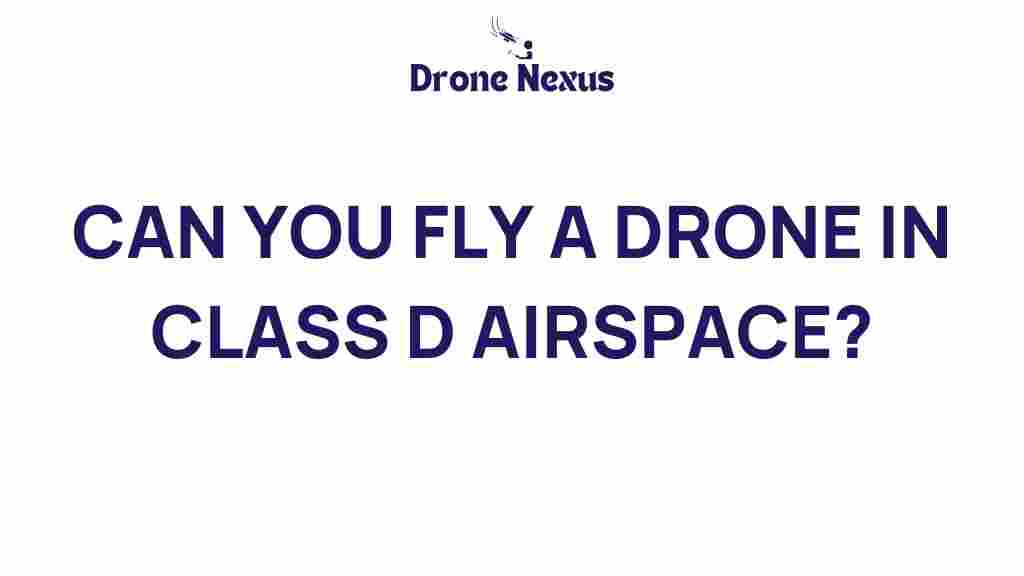Understanding Drone Flight in Class D Airspace
Drone flight has revolutionized various industries, from photography to agriculture. However, understanding the regulations governing drone operations is vital, especially when flying in Class D airspace. This article explores the nuances of drone flight in these controlled environments, ensuring that you remain compliant while maximizing the advantages of your drone.
What is Class D Airspace?
Class D airspace is a type of controlled airspace that exists above airports with an operational control tower. It typically extends from the surface up to 2,500 feet above the airport elevation. The key characteristics of Class D airspace include:
- Controlled Environment: Drone flight in Class D airspace requires communication with air traffic control (ATC).
- Operational Hours: Class D airspace operates only when the control tower is open.
- Visibility Requirements: Pilots must maintain visual line-of-sight (VLOS) with their drones.
Understanding these characteristics is crucial for anyone looking to operate a drone in such areas.
The Importance of Communication
Effective communication with ATC is vital when engaging in drone flight within Class D airspace. This ensures the safety of both manned and unmanned aircraft. Before launching your drone, you must:
- Contact the control tower to inform them of your intended flight.
- Request permission to operate your drone in their airspace.
- Follow any additional instructions provided by ATC.
Preparing for Drone Flight in Class D Airspace
Preparation is key to a successful drone flight. Follow these steps to ensure that you are ready for your operation:
1. Check Airspace Status
Before initiating your drone flight, check the current status of the airspace. You can use various online tools and apps, such as FAA Weather, to get real-time updates on air traffic and weather conditions.
2. Ensure Compliance with Regulations
Familiarize yourself with the Federal Aviation Administration (FAA) regulations regarding drone flight. This includes understanding:
- Weight restrictions for your drone.
- Altitude limits specific to Class D airspace.
- Operational hours when flying is permitted.
3. Conduct a Pre-Flight Inspection
A thorough pre-flight inspection can prevent accidents and ensure your drone operates smoothly. Check the following:
- Battery levels and connections.
- Propellers for damage or wear.
- Camera and sensors for proper functioning.
Executing a Safe Drone Flight
Once you have completed your preparations, it’s time to execute your drone flight. Follow these guidelines for a safe experience:
1. Maintain Visual Line of Sight
As per FAA regulations, always keep your drone within your visual line of sight. This is essential for avoiding obstacles and ensuring the safety of other aircraft.
2. Follow ATC Instructions
Maintain communication with ATC throughout your flight. Adhere to any instructions or restrictions they provide. This cooperation is crucial for the safety of all airspace users.
3. Monitor Your Surroundings
Stay vigilant during your flight. Be aware of other aircraft and potential hazards in the environment. Always be prepared to land your drone if necessary.
Troubleshooting Common Issues During Drone Flight
Even with proper preparation, issues can arise during drone flight. Here are some common problems and their solutions:
1. Loss of Signal
If you experience a loss of signal, follow these steps:
- Use the return-to-home feature if available.
- Try to regain control by moving closer to the drone.
- If unsuccessful, be prepared to locate the drone manually.
2. Battery Failure
A sudden drop in battery level can be alarming. To address this:
- Always monitor battery levels during your flight.
- Plan for a safe landing well before the battery runs out.
- Consider carrying extra batteries for extended flights.
3. Adverse Weather Conditions
Weather can change rapidly, impacting your drone flight. If you notice adverse conditions:
- Land your drone immediately if visibility decreases.
- Postpone your flight if wind speeds exceed your drone’s capabilities.
- Check weather forecasts before flying.
Best Practices for Drone Flight in Class D Airspace
To ensure a smooth and legal drone flight experience in Class D airspace, consider these best practices:
- Always keep an updated Sectional Chart to identify airspace boundaries.
- Attend local drone flying clubs for community support and knowledge sharing.
- Regularly check for updates on FAA regulations and guidelines.
Conclusion
Understanding the nuances of drone flight in Class D airspace is essential for safe and compliant operations. By following the steps outlined in this article and maintaining effective communication with ATC, you can enjoy the full benefits of drone flight while ensuring the safety of yourself and others. Remember, preparation and vigilance are key to a successful drone operation.
For more information on drone regulations and best practices, visit the FAA UAS page for the latest updates and resources.
This article is in the category Safety and created by DroneNexus Team
